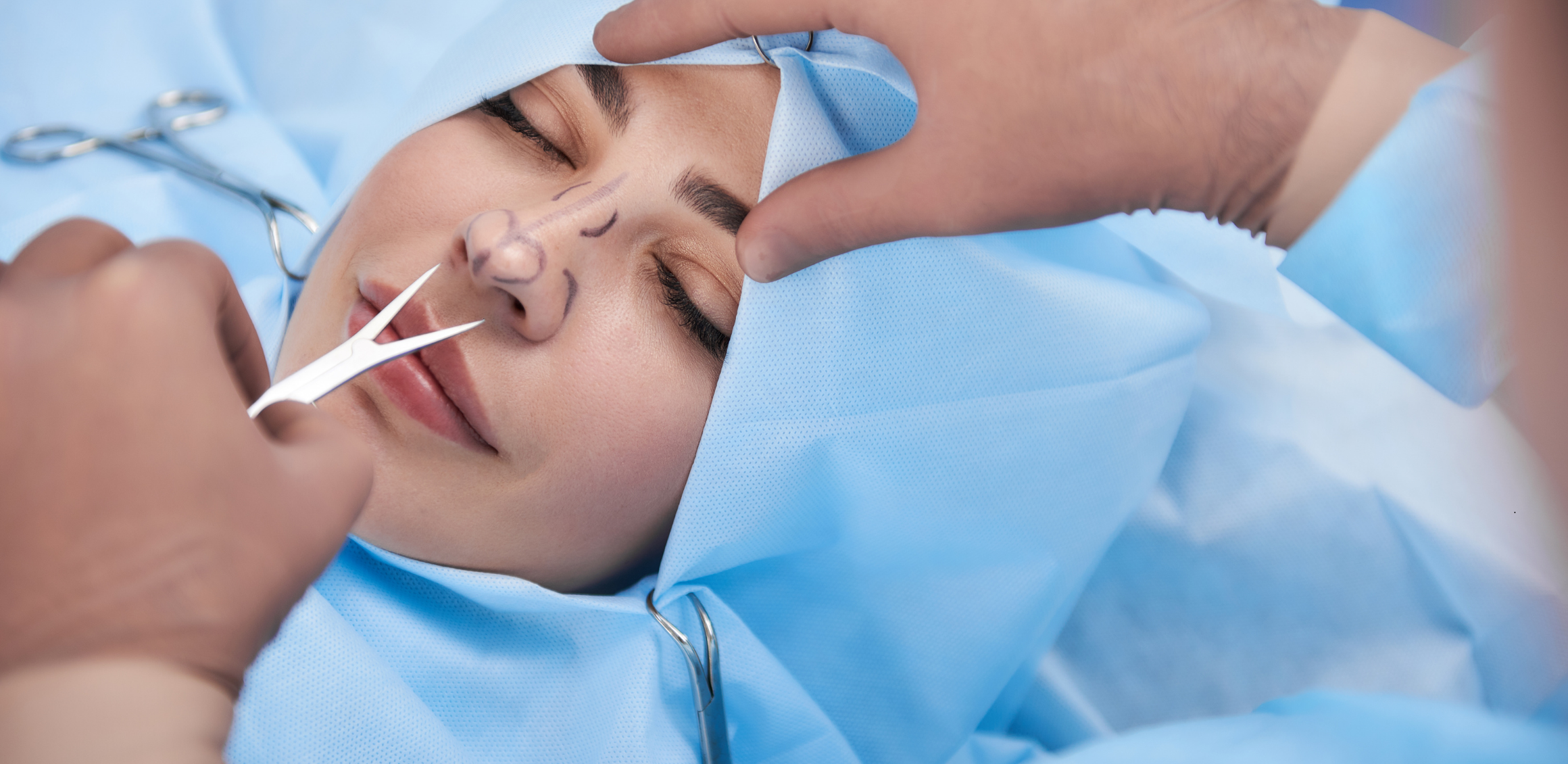
Rhinoplasty
Rhinoplasty is a surgical procedure typically performed to alter the shape and structure of the nose for either aesthetic or functional purposes.
Rhinoplasty
Rhinoplasty is a surgical procedure typically performed to alter the shape and structure of the nose for either aesthetic or functional purposes. This procedure can enhance nasal aesthetics, modify the size or shape of the nose, correct defects in the nasal tip or bridge, straighten a deviated septum, or address breathing issues.
Rhinoplasty Procedure:
- Anesthesia: Rhinoplasty is usually performed under general anesthesia, ensuring that the patient sleeps through the procedure and experiences no pain or discomfort.
- Creating the Incision: The rhinoplasty procedure can be performed using either an open or closed technique. Open rhinoplasty involves a small incision on the columella (the tissue between the nostrils), while closed rhinoplasty involves incisions made within the nostrils to access the underlying nasal structures.
- Reshaping and Correction: The rhinoplasty surgeon uses surgical instruments to reshape or correct the nasal bones and cartilage. This can include straightening the nasal bridge, altering the shape of the nasal tip, or correcting a deviated septum.
- Stitches and Bandages: Once the procedure is complete, the surgeon places stitches inside or outside the nose and applies a splint or bandage on the nose. This helps to support the new shape of the nose during the healing process.
- Recovery Process: The recovery process after rhinoplasty varies depending on the individual patient’s situation and the complexity of the procedure. Swelling and bruising are common for a few days post-surgery, but these typically subside within a few weeks. Full recovery and the final results may take several months to become apparent.
Rhinoplasty can be used not only to improve a person’s aesthetic appearance but also to correct breathing problems. Therefore, a comprehensive consultation and evaluation process is essential to understand both the aesthetic and functional expectations of the patient. Rhinoplasty should be performed by an experienced plastic surgeon, with a customized plan tailored to each patient.
